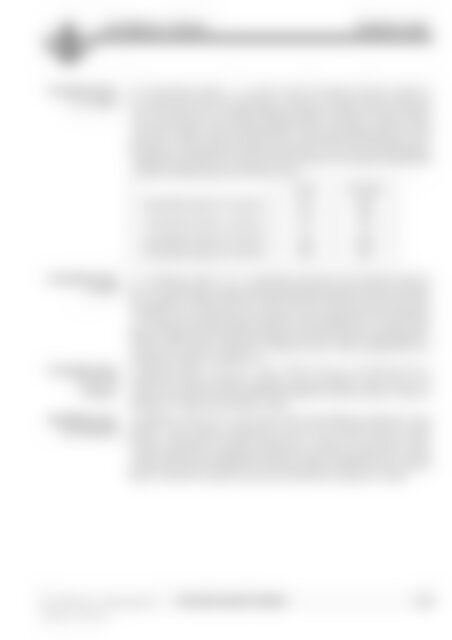RIC-0563 Developing algebraic thinking
Create successful ePaper yourself
Turn your PDF publications into a flip-book with our unique Google optimized e-Paper software.
DIVISIBILITY RULES<br />
Teachers notes<br />
Divisibility rules For Divisibility Rules 1, 2, 3<br />
and<br />
4<br />
only 6 number tiles are used for<br />
1, 2, 3 and 4 each task and only two divisibility rules are involved. Many solutions<br />
exist for each task. In creating these numbers, students must consider<br />
place value ideas, along with divisibility tests. The least number would<br />
have the 1-digit in the hundreds place, most likely followed by 0 in the<br />
tens place. The greatest number would have a 9 in the hundreds place,<br />
possibly followed by 8 in the tens place. Below are the least and greatest<br />
numbers satisfying the divisibility rules.<br />
Least<br />
Greatest<br />
Divisibility Rules 1 (2 and 3) 102 984<br />
Divisibility Rules 2 (3 and 5) 105 975<br />
Divisibility Rules 3 (3 and 4) 108 984<br />
Divisibility Rules 4 (4 and 9) 108 972<br />
Divisibility rules In Divisibility rules 5<br />
and<br />
Divisibility rules 6, nine number tiles are<br />
5 and 6 used to create three 3-digit numbers satisfying the listed divisibility tests.<br />
The question: ‘Where should I start?’ brings problem-solving into play.<br />
Divisibility by 2 requires an even digit in the ones place and divisibility<br />
by 4 requires the last 2-digit number to be divisible by 4. In each task,<br />
these conditions provide what appears to be the logical ‘starting place.’<br />
Having met those conditions, students have many possibilities for<br />
creating numbers divisible by 3.<br />
Divisibility rules Divisibility rules 7, 8, 9, 10, 11 and 12<br />
each use all 10 numbers tiles to<br />
7, 8, 9, 10, create two 5-digit numbers satisfying two divisibility rules. Again, the<br />
11 and 12 nature of a particular test essentially dictates a starting place, unless a<br />
strategy of ‘Guess and check’ is used.<br />
Divisibility rules<br />
Divisibility rules 13, 14<br />
and<br />
15<br />
are the most difficult activities in this<br />
13, 14 and 15 section. Each requires students to use all 10 number tiles to create<br />
several multiplace numbers satisfying a variety of divisibility rules.<br />
Certain digits are strategically placed to provide students with limited<br />
choices for particular digits. For all three tasks, students cannot merely<br />
start on the first number and work through the numbers in order.<br />
R.I.C. Publications ® www.ricgroup.com.au DEVELOPING ALGEBRAIC THINKING 47<br />
ISBN 978-1-74126-088-5

















